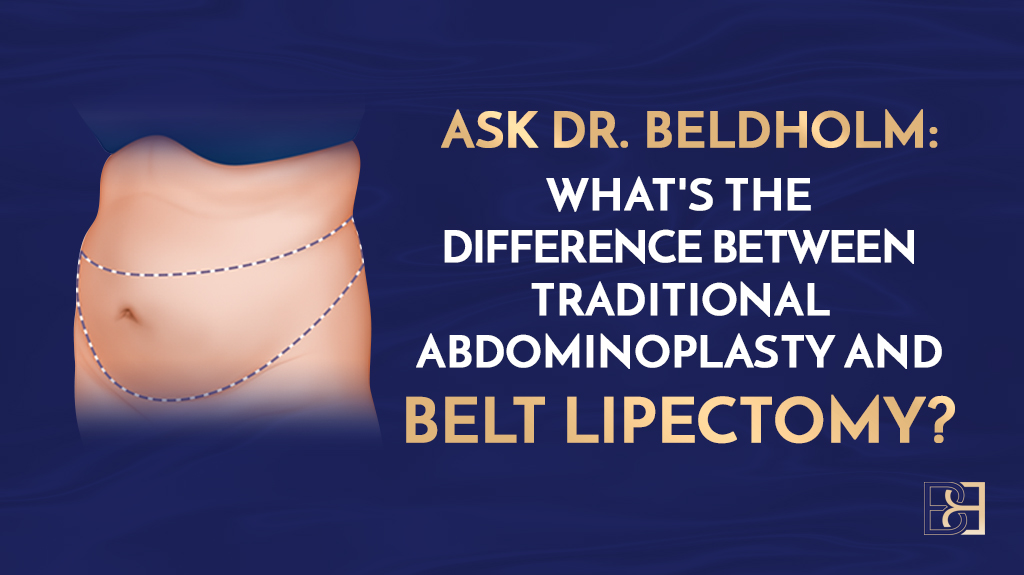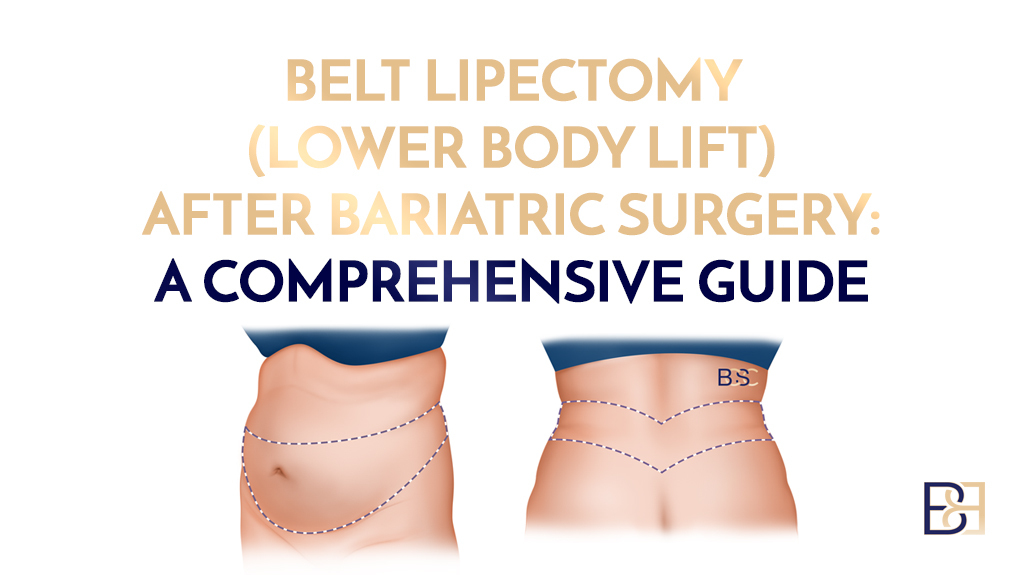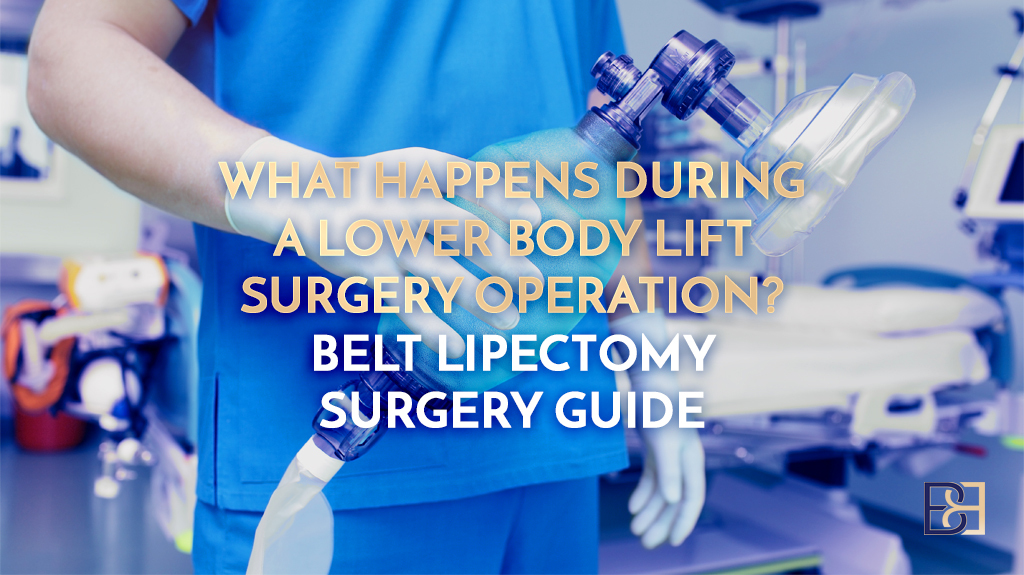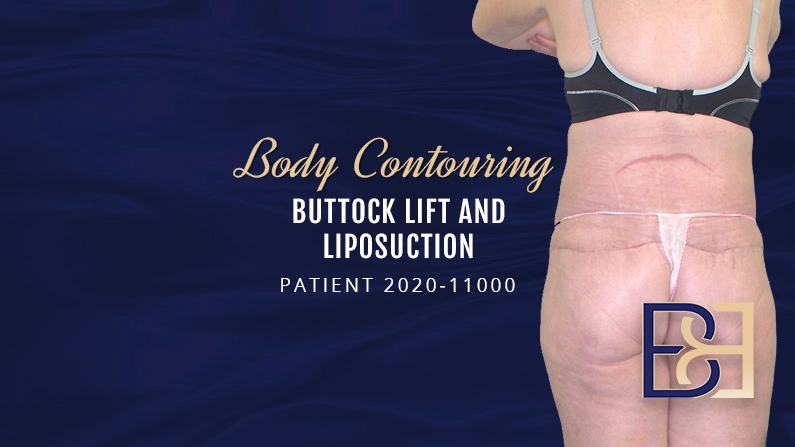If you have ** skin and fat around your tummy, hips, lower back, buttocks, mons, and thighs after a significant amount of weight loss, you could be a candidate for belt lipectomy surgery. This operation, also called lower body lifting, removes excess skin and tones the midsection 360 degrees around the belt line. A belt lipectomy procedure does more than remove ** skin tissue. It provides a more proportionate and greatly ** body contour. I can also remove excess fat with VASER liposuction during the procedure.
Book your appointment online now
A circumferential abdominoplasty is a complex surgery with many steps. You’ll learn how I perform the operation step by step in this article, including how I remove excess tissue from the abdominal wall and waistline.

Preparing for Your Belt Lipectomy Surgery
You’ll have a consultation with me to discuss your goals, areas of concern, and my specific surgical technique before your surgical procedure. Here is what to expect during our consultation.
We’ll discuss which areas of concern you want to **.
The first thing we’ll discuss is your goals and expectations. I’ll start by asking you to point out your trouble zones. You could be a candidate for a belt lipectomy procedure if you want to remove excess skin and fat around your abdomen, love handles, lower back, bum, mons area, and thighs after major weight loss. If you have other areas where you want to remove loose skin, we can discuss that during your consultation as well.

I’ll ask you several pertinent questions.
There are many body contouring procedures available to patients with excessive loose skin after they lose weight. To determine if a belt lipectomy procedure is right for you, I’ll examine you during your consultation and ask you several questions.
In addition to discussing your areas of concern, I’ll ask you about your lifestyle, (e.g., whether you smoke, drink, use recreational drugs, employment, living situation), the amount of weight you’ve lost, how long you’ve been at your current weight, your weight loss journey, how you lost the weight (e.g., bariatric surgery, diet, other lifestyle changes), your medical history, (e.g., pre-existing conditions such as heart disease, high blood pressure, diabetes, contraindications to surgery), previous surgeries, and family history.
Body contouring procedures might not be an option if you have serious health issues, are pregnant or nursing, or if you are still significantly overweight. Smokers are also not good candidates, but if you agree to quit long term it could be an option.
I’ll conduct a pinch test and take your weight and measurements to determine your BMI (Body Mass Index).

Belt lipectomies are for people who have undergone significant weight loss, losing approximately 30 or more kilos, with excess skin and fat. A belt lipectomy operation should only be performed after you have reached a normal BMI range. If you’re still significantly overweight, you may need to continue losing weight before you can proceed. A belt lipectomy is a body contouring procedure, not a weight-loss solution. Furthermore, you should maintain a stable weight and a healthy lifestyle for six months or longer before and after your surgery as weight fluctuations can be problematic and negatively impact your results.
I’ll conduct a thorough physical examination.
In order to determine whether you are a suitable candidate for a circumferential abdominoplasty, I’ll conduct a thorough physical examination, paying particular attention to the body areas you want me to **. I suggest that you wear clothing that is ** to take off and put back on again as you will be asked to change into a surgical gown.
I’ll take photos.
I will need to take photographs of your areas of concern. Your face and identifying markings such as tattoos will be blurred out for privacy. Rest assured, your photos will remain private and confidential unless you sign a waiver allowing me to use your before and after photos for promotional, training, and other purposes.
I’ll create your custom surgical plan.
After your consultation, I will design a surgical plan that’s ideal for you based on your history, concerns, and body contouring goals. Please keep in mind that even if I determine that a belt lipectomy is not right for you, there may be other options available to correct your issues.
Often times, people who have lost a dramatic amount of weight but are not candidates for a belt lipectomy, may be the ideal patient for one of the many varieties of abdominoplasty (tummy tuck) surgeries I perform. These procedures range from the least invasive mini tummy tuck to the more complex Fleur-de-Lis abdominoplasty which ** more severe cases. I’ll explain each option during your consultation.

I’ll review all of the more common risks and explain any serious potential complications.
A belt lipectomy, like any surgery, carries some risks, even for the **, low-risk patients. I believe in 100% transparency, and will advise you of all of the potential risks and complications so you can make a well-informed decision. We will review what can happen if complications occur such as blood clots, excessive bleeding, fluid buildup, and more.
Belt lipectomy, which is considered major surgery, is a major, life-altering event. So please rest assured that there is absolutely no rush to make a decision on the day of our initial consultation. You are under no obligation nor should you feel pressured to proceed with the procedure until you are 100% ** and ** with your decision. In fact, I encourage my patients to go home and think about it and discuss it with friends and family before scheduling surgery.

Belt Lipectomy Surgery Steps
We’ll prepare you for surgery.
- Guide markings will be drawn. Before your operation, I will meet you in the hospital’s anaesthetic bay to review your surgical plan and draw markings on your skin to guide your surgery. This will be done while you are awake and standing upright.
- You’ll be positioned on the operating table. I’ll operate on your backside first, so you will be positioned lying face down on the operating table.
- General anaesthesia will be administered. My anaesthetist will administer general anaesthesia through an IV. This will keep you sedated throughout the procedure.
I will start the operation from the front, performing a traditional abdominoplasty (tummy tuck) first
- VASER Liposuction on Your Abdomen: I will first perform VASER liposuction, and once that is done, I will proceed to remove any loose skin from your abdomen and sides as needed.
- Incisions: Next, I’ll make a small incision to free the umbilicus, after which I will make a horizontal incision from hip-to-hip to perform your abdominoplasty. Since you’re undergoing a belt lipectomy, the incision lines will continue over your hips.
- Abdominal Muscle Repair: I’ll dissect a tunnel to reach your upper layer of abdominal muscles, commonly called the six-pack muscles. If you have muscle separation down the middle, I will suture the two halves of the rectus abdominis muscle together. This step is the same one performed during a traditional tummy tuck (abdominoplasty).

- Removing Excess Abdominal Skin: Again, I will measure and trim away the excess skin.
- Belly Button Repositioning: Next, I will pull the skin together at the incision line and determine where your belly button should go. I’ll create a new hole for your belly button, pull your navel stalk through the hole, and suture it in place. This step ensures your belly button won’t sit too low on your abdomen after all the excess tummy skin is removed.
- Closing Your Incision: I will close your incision in layers with permanent and dissolving sutures. I’ll also use a tissue sealant spray to reduce the risk of fluid buildup in the gaps between your recently dissected tissues.
We’ll turn you over to the side
- Turning Your Body Over: After I complete your abdomen, we will turn you to your side to access the flank, hips, and back area.
I’ll perform further VASER liposuction.
VASER liposuction is performed again in 3 steps:
- Wetting Solution: VASER liposuction starts with me injecting tumescent fluid into the areas where excess fat is present. The tumescent fluid, or wetting solution, helps control bleeding during the operation and also helps me to isolate the fat cells.
- Liposuction Incisions: I’ll make tiny incisions just large enough to insert the thin and narrow VASER liposuction probe.
- Protecting the Skin: The VASER probe gets quite hot as it goes to work melting the fat cells, so I will first protect your skin with a small, heat-resistant device to prevent burns.
- Fat Melting: VASER liposuction is unique because it liquefies the fat cell contents using ultrasonic waves.
- Fat Extraction: Once the fat has melted into a butter-like consistency, the unwanted fat cells are extracted through the cannula, a thin hollow tube. This is what makes the VASER method much smoother and less abrasive on the body than traditional lipo.
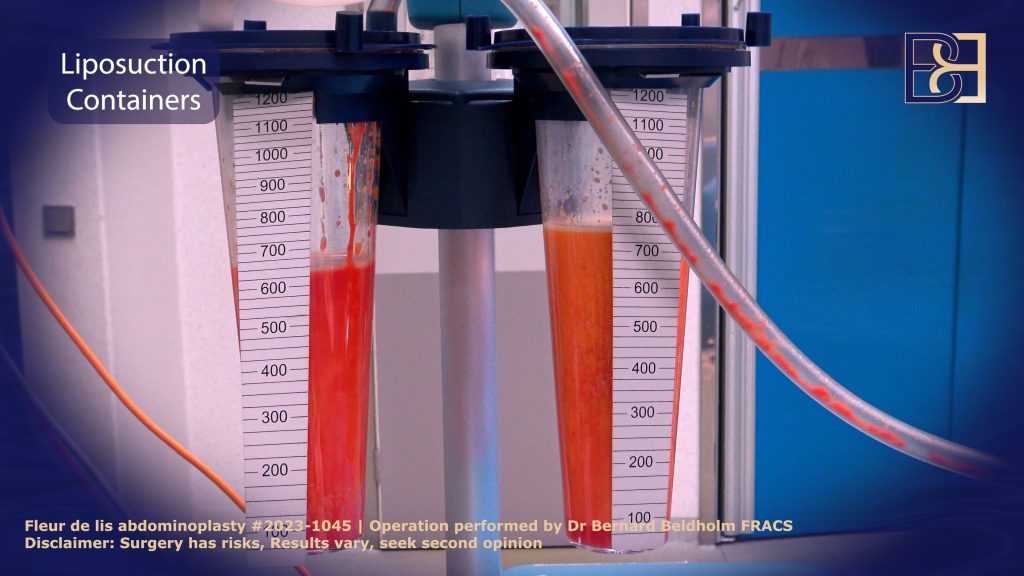
I’ll remove the excess skin and fat from your flanks and back.
- Rear Waistline Incision: I will first make a horizontal incision across your rear waistline where the buttocks and lower back meet.
- Removing Excess Skin and Fat: I will carefully measure and trim the excess skin from your lower back.
- Closing the Incision: I will close your incision with sutures. This step helps to create smoother-looking skin on the lower back, buttocks, and rear thighs as the skin is pulled taut.
I’ll finish up the last steps of your surgery.

- PICO Wound Dressing: Instead of a plain sterile bandage, I use a PICO negative-pressure wound bandage, a high-tech battery-powered apparatus that applies **, consistent negative pressure to the wound to aid in healing by keeping it contaminant-free while the incision heals.
- Compression Garments: You will be swollen after your operation. To reduce swelling, I’ll apply a compression garment before you wake from your surgery. You will wear your compression garment, which is easily ** by clothing, 24/7 for several weeks, changing it as needed to keep it clean. I highly recommend purchasing a second garment to use while the other one is being laundered.
Belt Lipectomy Recovery Process
Hospital Stay
I usually have my belt lipectomy patients stay in the hospital for two to three days on average. I’ll check in on you after your surgery to see how you are feeling and monitor for complications.
Showering
Because you may not allow the PICO system to get wet, and you will only be able to take sponge baths until the dressing is removed, I advise patients to take a nice long bath or shower right before surgery. Seven to nine days after your surgery, I’ll remove your PICO dressing and replace it with a dressing that can get wet. At that point, you’ll be able to enjoy a full shower, though submerging the still-fresh wound in a bath is not advised.
Downtime
Though you won’t be bedridden, you should rest during the first two to three weeks to allow your body time to recover. Though you may not feel up to it right away, it’s important that you do get up and walk around every few hours starting on day one to keep your blood flowing and reduce swelling and fluid retention. You will slowly increase your activity levels each day, though driving, exercise, and strenuous movements of any kind are not permitted for at least two weeks.
After this period, you will eventually be cleared to drive and go back to work, depending on the type of work you do. If you have a physically demanding job, however, you may need to take extra time off. Intense exercise, heavy lifting, etc. are off limits for approximately four to six weeks.

Possible Risks and Complications
Although most belt lipectomy procedures are complication-free, as with any surgery, there is always a potential for surgical complications and certain risks. Here are the ones to look out for:
- Seroma: Your tissues dissected during the surgery will need to heal. In the meantime, it’s possible for clear, serous excess fluid to build up in the tiny gaps between the dissected tissues. (Ref 2) This is called a seroma, which is a minor complication. Seroma often resolves on its own, but a large fluid buildup may need to be drained.
- Necrosis: Though extremely rare, infection at the incision site could result in tissue death if left untreated. This can lead to additional scarring, deeper infections, and can be dangerous.
- Blood Clots: Resting for prolonged periods might cause blood clots to form. A blood clot that breaks off and travels to the lungs, known as a pulmonary embolism, can be life-threatening. For this reason, walking around the hospital floor every few hours will greatly reduce the risk of blood clots developing.
Deep Vein Thrombosis: blood clot that forms in a deep vein in the body, usually in the leg. It can also occur in the arms, pelvis, or other deep veins. DVT can develop suddenly or gradually over time.
- Haematoma: Bruising is normal after a belt lipectomy. Blood that pools outside the blood vessels is normally a minor complication known as a haematoma. Haematomas can be drained in my office if needed. Small haematomas may spontaneously resolve on their own. (Ref 3)
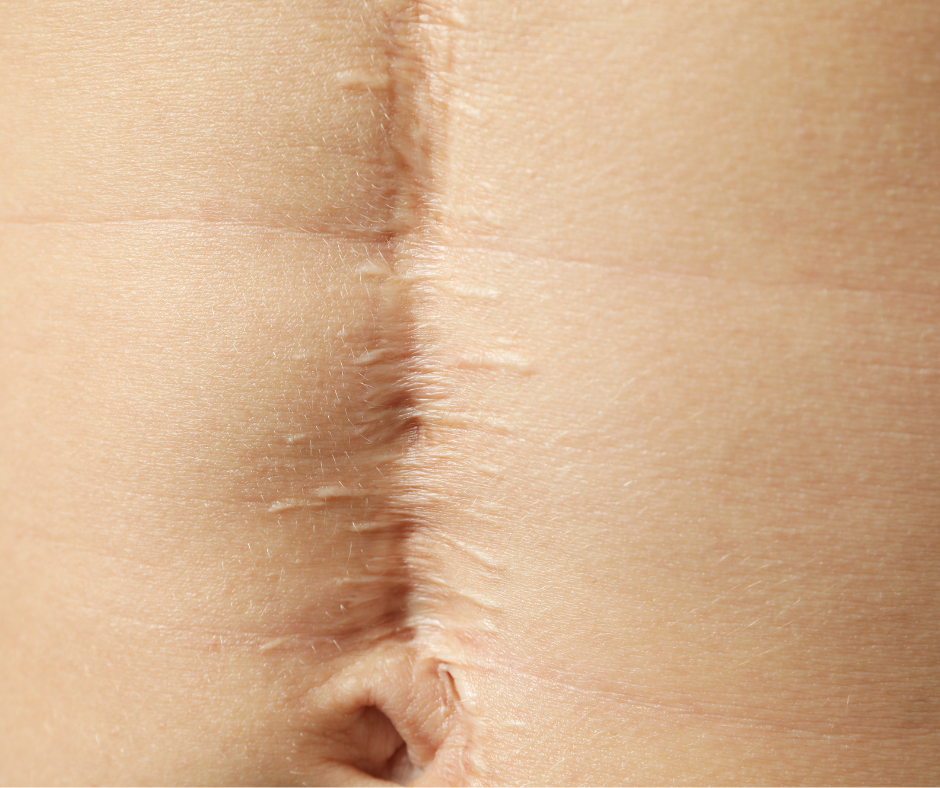
- Irregular Scarring: Your belt lipectomy scar will encircle your waistline near where you might normally wear a belt. The scar can’t be avoided. Rarely, some patients experience poor wound healing and develop irregular scarring such as hypertrophic or keloid scars. Scar deformities such as a dog-ear scar are possible. Scar deformities can often be revised to look better in many cases. (Ref 1)
- Uncontrolled Bleeding (Haemorrhage): Bleeding excessively is possible during or immediately after any surgery. I find that applying tumescent fluid before I start and sealing the blood vessels as I go helps reduce excessive bleeding during the surgery.
- Reactions to General Anaesthesia: A licensed anaesthetist will monitor your vital signs and administer a controlled dose of anaesthesia. Although rare, not everyone responds well to general anaesthetic. Possible complications can range from easily-controlled nausea to serious heart or breathing issues.

TIVA, an anaesthetic administered through an IV, is less likely to cause nausea than other methods of anaesthetic administration. If you feel queasy after your surgery, my team will be prepared to administer antiemetic medication to calm the symptoms.
- Infections: Superficial wound infections and deeper infections are possible. Antibiotics and keeping your incision clean are the keys to avoiding infections post-surgery.
- Changes in Skin Sensation: Some numbness at the surgical site is normal during your first three months of recovery. It is possible that some sensory changes are longer-lasting, if not permanent.
- Asymmetrical Results: During your consultation, I will explain that no one’s body is not ** symmetrical, even under the best of circumstances. Most people have one leg that is longer than the other or foot sizes that don’t ** match. Have you ever noticed that your rings fit differently from one hand to the other? That’s the beauty of the ** ** human body. And most of the time the differences are barely noticeable. The same runs true with surgically revised body parts.
Just like the natural asymmetry of our bodies, there can be a difference in the amount of skin and fat that needs to be removed from the right side to the left. Though I am always extremely careful to leave each side the same, there could be slight discrepancies.
Most asymmetry seen early in the healing process is caused by swelling and healing times running a bit differently, but most times, everything evens out in the end.
*Other risks and complications are possible. I’ll go over all of them during your consultation.
Seeing & Experiencing Your Final Results
Your final belt lipectomy results won’t be visible immediately. However, you will be free of loose skin folds starting from day one. For the first few weeks or months, a significant amount of swelling from the surgery will mask your final outcome. You’ll also have some bruising, which should resolve in two weeks or so. Within three to six months, the swelling should taper off and reveal a preview of what’s to come.
A year to 18 months after your surgical procedure is when you will see your final results. Most patients enjoy a firmer, better-contoured tummy, hip, lower back, and buttocks after seeing their final belt lipectomy results. Your upper pubic area and inner/outer thighs should appear smoother and firmer as well. Any remaining skin can be removed with a second procedure, such as a thighplasty or monsplasty, six months later.
Dr Beldholm’s Key Takeaways

A belt lipectomy operation can take six hours or more. It’s a complex surgery with many steps. As a specialist surgeon focused on helping post-weight-loss patients achieve a well-contoured body shape, I take the time to perform each step as carefully as possible to give my patients the greatest chance of a beautiful outcome.
If you undergo a belt lipectomy after massive weight loss, you could be rewarded with benefits like a toned body, firmer skin, and less skin irritation from the excess skin rubbing together. My technique also uses VASER liposuction to reduce unwanted fat.
Although most patients enjoy a dramatically ** body shape and tighter-looking skin after a belt lipectomy, there are trade offs to consider. A risk-free surgery is never guaranteed, and you’ll be left with a long surgical scar. The scar can take a long time to fade and will never fully disappear. Many patients tell me the scar isn’t too bothersome since it’s usually hidden in clothes. They are often more focused on enjoying their results than worrying about the scar’s appearance, but everyone is different.
To summarise, you could be an excellent candidate for a belt lipectomy if you have ** skin folds on your stomach, hips, lower back, upper pubic area, buttocks, and thighs after dropping 30+ kilos. Before scheduling your surgery, you’ll need to be at or close to your goal weight and keep your weight stable for at least six months. You might not be a good candidate if you are actively pregnant, nursing, smoking, or have serious medical conditions. To learn more, reach out to my office or ask your GP for a referral to book your private consultation with me.
Book your appointment online now
FAQs
Abdominoplasty (Tummy Tuck) vs. Belt Lipectomy (Lower Body Lift): What are the similarities?
A belt lipectomy and an abdominoplasty both involve the removal of excess skin and fat from the abdomen. Both procedures can also include the repair of separated abdominal muscles if necessary. However, a belt lipectomy is a more extensive surgery that removes loose skin not only from the abdomen but also from the hip and back areas.
Abdominoplasty (Tummy Tuck) vs. Belt Lipectomy (Lower Body Lift): What are the differences?
A belt lipectomy removes loose skin on the front, back, and sides of the waist, making it suitable for people who’ve lost a significant amount of weight. A tummy tuck (abdominoplasty) only ** ** skin and fat on the tummy. Although both procedures ** excess skin, the scar from a tummy tuck (traditional abdominoplasty) is smaller than a belt lipectomy.
Is belt lipectomy surgery painful?
You’ll receive general anaesthetic, which means you’ll have no pain or memory of your surgery. Soreness and aching are expected in the first few weeks. I’ll create a custom pain management plan for you which may include prescribed medications, compression garments, and lifestyle modifications to ease discomfort.
Do I need a GP referral?
Healthcare laws in Australia changed in 2023. Now, if you’re considering a belt lipectomy in NSW or any other body contouring surgery to remove excess skin, you will need a GP referral before meeting with a surgeon who specialises in body contouring such as myself.
How much does a belt lipectomy cost?
Please see my website pricing links for my current starting prices. Every patient differs and it’s a customised procedure so pricing can vary from person to person.
What surgical risks are possible?
Wound separation, infections, asymmetrical cosmetic results, poor scarring, blood clots, and other complications are possible. This surgery is better left to highly experienced surgeons.
Will I need surgical drains?
You will most likely need surgical drains. These are usually removed a few days after the procedure.
Will I need to wear an abdominal binder?
During your recovery, you will need to wear a compression garment or binder to alleviate swelling.
Does a belt lipectomy include liposuction?
A belt lipectomy might involve liposuction, which removes fat from the underlying tissues. I prefer to use VASER liposuction, which I consider one of the gentlest surgical fat removal options.
Will a belt lipectomy resolve skin irritation and chafing?
If your excess skin rubs together causing chafing or rashes, a belt lipectomy can certainly help.
How soon can I schedule my belt lipectomy after weight loss surgery?
If you’ve had weight loss surgery, you’ll need to wait until you are a healthy weight and have kept your weight stable for six months or longer before undergoing body contouring.
What are some signs of abdominal muscle separation?
Many patients who seeking to ** their body contours after major weight loss have ab muscle separation in addition to stretched skin that requires tissue removal. Symptoms of abdominal muscle separation include a visible gap between the abdominal muscles that may be visible when looking in the mirror. I can suture the muscles of the abdominal wall together during a belt liipectomy (circumferential abdominoplasty).
How long does it take for the surgical scar to fade?
The scar placement is usually around the natural waistline. The resulting scar can take 12 to 18 months to mature.
References
- Kang, Ajaipal S, and Kevin S Kang. “A Systematic Review of Cutaneous Dog Ear Deformity: A Management Algorithm.” Plastic and Reconstructive Surgery. Global Open, U.S. National Library of Medicine, 23 Sept. 2020, www.ncbi.nlm.nih.gov/pmc/articles/PMC7544318/.
- Kazzam, Muattaz E. “Postoperative Seroma Management.” StatPearls [Internet]., U.S. National Library of Medicine, 14 Aug. 2023, www.ncbi.nlm.nih.gov/books/NBK585101/.
- Shikhman, Alexander. “Abdominal Hematoma.” StatPearls [Internet]., U.S. National Library of Medicine, 10 Apr. 2023


